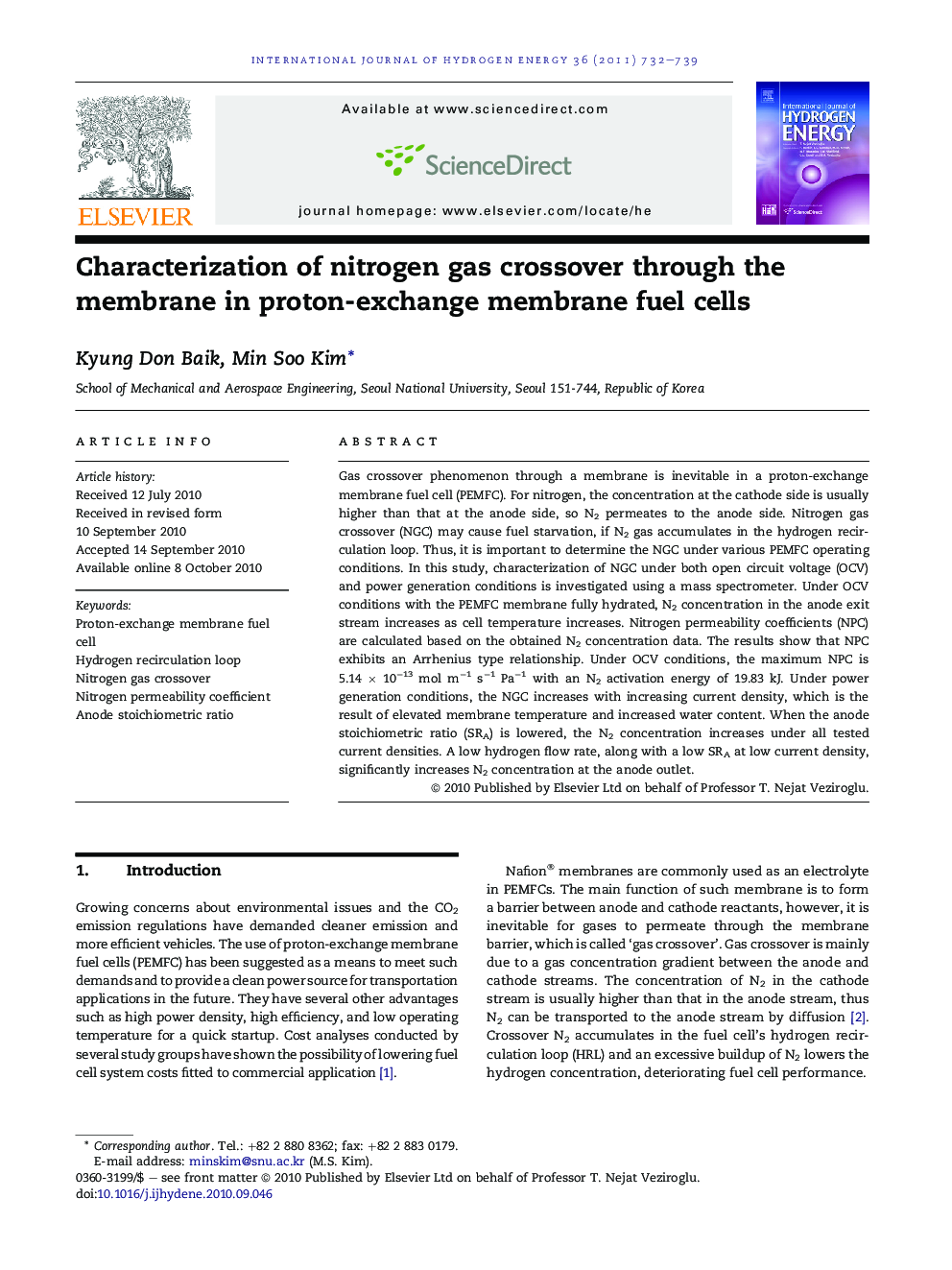| Article ID | Journal | Published Year | Pages | File Type |
|---|---|---|---|---|
| 1277828 | International Journal of Hydrogen Energy | 2011 | 8 Pages |
Gas crossover phenomenon through a membrane is inevitable in a proton-exchange membrane fuel cell (PEMFC). For nitrogen, the concentration at the cathode side is usually higher than that at the anode side, so N2 permeates to the anode side. Nitrogen gas crossover (NGC) may cause fuel starvation, if N2 gas accumulates in the hydrogen recirculation loop. Thus, it is important to determine the NGC under various PEMFC operating conditions. In this study, characterization of NGC under both open circuit voltage (OCV) and power generation conditions is investigated using a mass spectrometer. Under OCV conditions with the PEMFC membrane fully hydrated, N2 concentration in the anode exit stream increases as cell temperature increases. Nitrogen permeability coefficients (NPC) are calculated based on the obtained N2 concentration data. The results show that NPC exhibits an Arrhenius type relationship. Under OCV conditions, the maximum NPC is 5.14 × 10−13 mol m−1 s−1 Pa−1 with an N2 activation energy of 19.83 kJ. Under power generation conditions, the NGC increases with increasing current density, which is the result of elevated membrane temperature and increased water content. When the anode stoichiometric ratio (SRA) is lowered, the N2 concentration increases under all tested current densities. A low hydrogen flow rate, along with a low SRA at low current density, significantly increases N2 concentration at the anode outlet.
